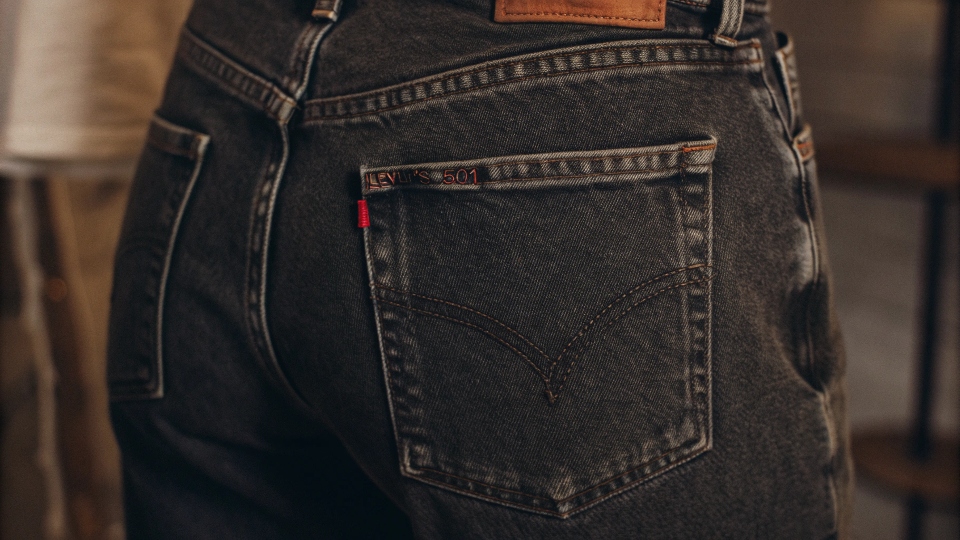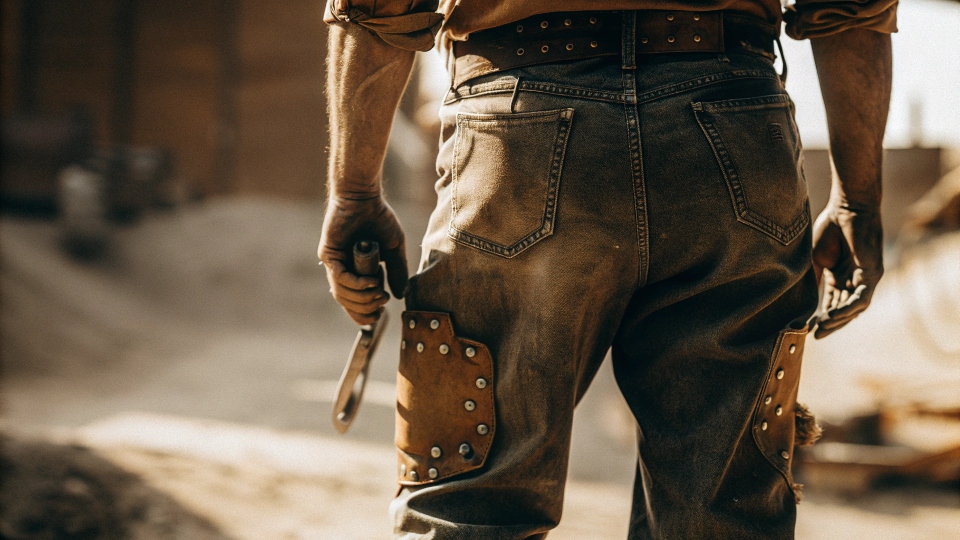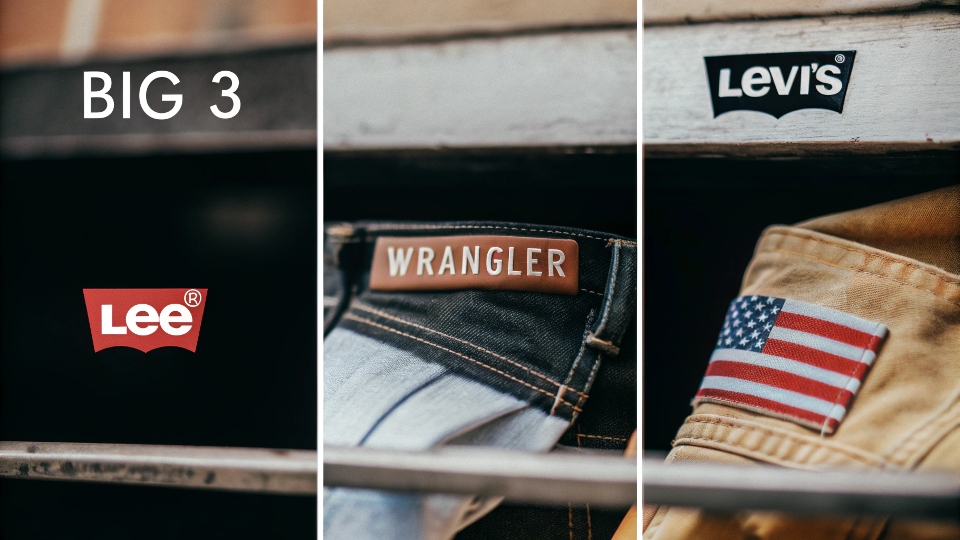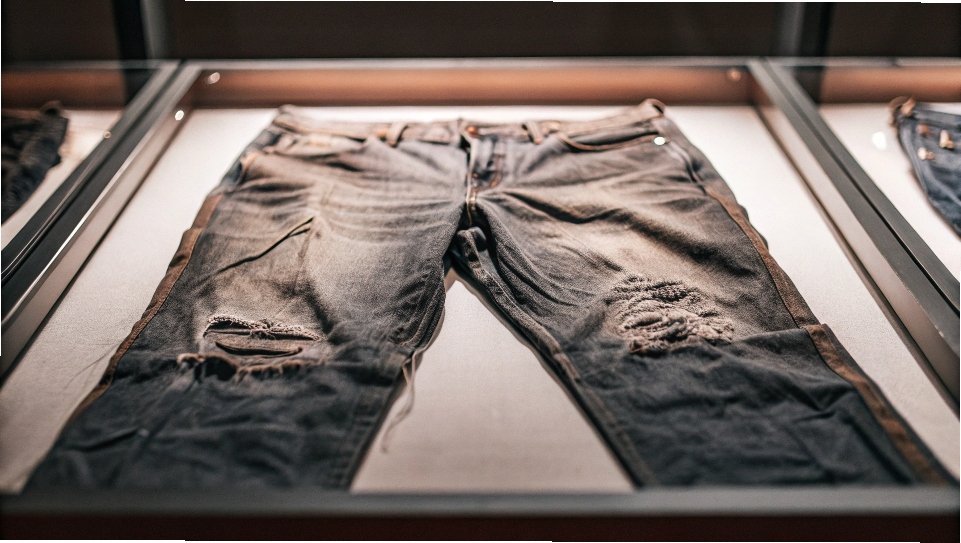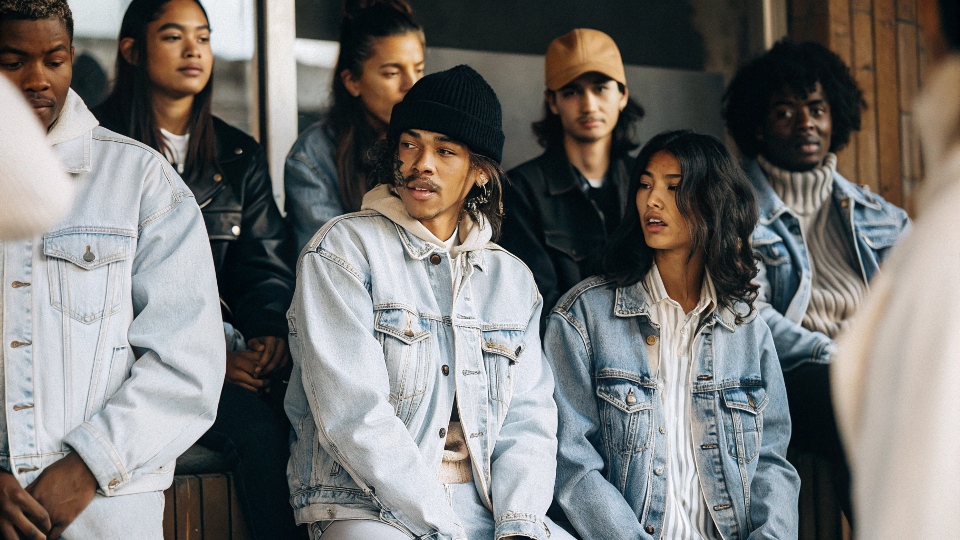You see that little red tab on back pockets everywhere you go. Levi's is more than just a brand; it's a global uniform. But how did one company a hundred and fifty years old stay so dominant?
Levi's jeans1 are popular because they invented the product and have built a reputation for quality and durability. They have also masterfully connected the brand to major cultural moments, from cowboys to rock stars, making them a timeless icon.
From my factory floor here in Dongguan, I have a deep respect for Levi's. We produce jeans for many brands, and I an see the difference in design and construction. Levi's isn't just selling a pair of pants; they are selling a piece of history.
Their success is a case study in how to build a brand that lasts. It's a perfect mix of being the first, being the best for a long time, and being smart enough to change with the world.
What Makes Levi's Jeans So Special?
You can buy jeans from hundreds of brands. So why do people stay so loyal to Levi's, often paying more for that familiar red tab?
Levi's are special because they are the original. They patented the first blue jean in 1873. This history, combined with a long-standing reputation for using durable materials and reliable construction, makes them an authentic icon.
In my line of work, we talk about "heritage." No brand has more denim heritage than Levi's. They didn't just join the market; they created it.
This gives them an authenticity that no other company can buy. But history alone isn't enough to keep a brand at the top for over a century. You must back it up with a solid product.
The Foundation of Quality
When we get a tech pack for a high-quality jean, the specifications often echo the standards Levi's set a long time ago. They built their reputation on making a jean that could withstand the toughest conditions.
- Durable Fabric: The classic Levi's 501 jean uses a heavyweight denim2, usually around 12 to 14 ounces. This is much thicker and stronger than the fabric used in many cheaper, fast-fashion jeans.
- Copper Rivets: This was their original patent with Jacob Davis. They placed small copper rivets3 at stress points, like the corners of the pockets, to keep them from tearing. It's a small detail that makes a huge difference in the life of the garment.
- Strong Stitching: They use heavy-duty thread and reinforced stitching techniques.
This commitment to making a product that lasts is the core of their special appeal. People trust that a pair of Levi's will be a reliable part of their wardrobe for years.
What Are the Big 3 Jeans Brands?
You know Levi's is a giant in the denim world. But who are their main historical competitors, the other brands that helped define American workwear?
The "Big 3" original American jeans brands are Levi's, Wrangler, and Lee. Each brand has a distinct heritage and is known for serving a different part of the American workwear and cultural landscape.
While Levi's was the first, two other major players emerged who also became icons of American style. As a manufacturer, I understand how these brands created unique identities to compete.
They didn't just copy Levi's; they carved out their own space in the market by focusing on specific customers and features. This is how they all managed to thrive and become household names around the world.
A Quick Look at the Denim Giants
| Brand | Founded | Original Target Audience | Defining Feature | Cultural Image |
|---|---|---|---|---|
| Levi's | 1853 | Miners and Laborers | The original copper-riveted design | The Rebel and The Everyman |
| Lee | 1889 | Railroad Workers, Farmers | The "Union-All" coverall, zip-fly jeans | The Dependable Worker |
| Wrangler | 1947 | Cowboys and Rodeo Riders | "Broken twill" denim, flat rivets | The Authentic Cowboy |
Levi's started with the miners of the Gold Rush. Lee focused on mechanics and railroad workers with practical innovations like the zipper fly.
Wrangler came later but was designed specifically for rodeo cowboys, with features like flat rivets that wouldn't scratch a saddle. Together, these three brands created the foundation of the entire global denim industry.
What Pair of Jeans Cost $10,000?
You hear stories about incredibly expensive jeans. It sounds crazy, but you wonder if it is true that a simple pair of denim pants can be worth thousands of dollars.
Yes, a vintage pair of Levi's jeans, especially from the 19th century, can easily sell for over $10,000. These are not just clothing; they are rare historical artifacts from the American West, and collectors pay top dollar for them.
The value of these old jeans comes down to one thing: history. In my factory, we can use modern techniques to perfectly replicate the look of a 100-year-old pair of jeans.
We can match the fading, the wear patterns, and the fabric. But we can't replicate the story. An original pair of Levi's from the 1880s was actually worn by a miner or a cowboy. It survived for over a century. That is what makes it so valuable.
Why So Expensive?
The most sought-after pairs are the pre-1900 "XX" models. They are the earliest jeans ever made.
- Rarity: Very few of these jeans still exist. Finding a pair in any condition is like finding treasure.
- Historical Significance: They are a physical link to the history of the American West. They tell a story about the Gold Rush, laborers, and the building of a country.
- Design Details: Collectors look for specific details found only on the earliest pairs, like a single back pocket, a "cinch" back for adjusting the waist, and old-style rivets.
These jeans are more like historical documents than clothes. They are bought by serious collectors and museums, which is why a pair discovered in an old mine shaft can fetch a price higher than a new car.
Who Is Levi's Target Audience?
You see teenagers wearing Levi's, but your dad wears them too. This makes you wonder who the company is actually trying to sell to.
Levi's has a uniquely broad target audience that spans multiple generations. They successfully market to young, trend-focused consumers through collaborations4 while also appealing to older customers who value tradition, quality, and nostalgia.
This is the genius of Levi's marketing, and it's something I admire as a business owner. It is incredibly difficult to be seen as cool by a 19-year-old and also as a reliable classic by a 60-year-old, but they manage to do it. They don't have one target audience; they have several, and they have a specific strategy for each one.
A Strategy for Everyone
Levi's balances its marketing with surgical precision. They use different channels and messages to reach different groups.
- For Young Consumers (Gen Z and Millennials): They use high-profile collaborations with hype brands like Air Jordan and partner with major pop stars, like Cai Xukun in China. This creates buzz, connects Levi's to current trends, and makes the brand feel fresh and relevant.
- For the Core Customer (Ages 30-50): They focus on the quality and timelessness of their classic fits, like the 501 and 511. Marketing here is about durability, authenticity, and the perfect fit for everyday life.
- For the Heritage Enthusiast: They engage this group with documentaries, exhibitions, and limited-edition re-releases of historical models. This storytelling reinforces their status as the original denim brand and appeals to customers who love the history and story behind their clothes.
By speaking to each group in a way that resonates with them, Levi's avoids being locked into one demographic.
Conclusion
Levi's popularity is no accident. They built it on a foundation of being the first, a commitment to quality, and a brilliant ability to remain a cultural symbol for every generation.
-
Discover the unique qualities that make Levi's jeans a timeless choice for consumers. ↩
-
Understand the benefits of heavyweight denim and why it's a hallmark of quality in Levi's jeans. ↩
-
Find out how copper rivets revolutionized denim design and contributed to Levi's success. ↩
-
Explore how Levi's partnerships with other brands keep the brand relevant and trendy. ↩

